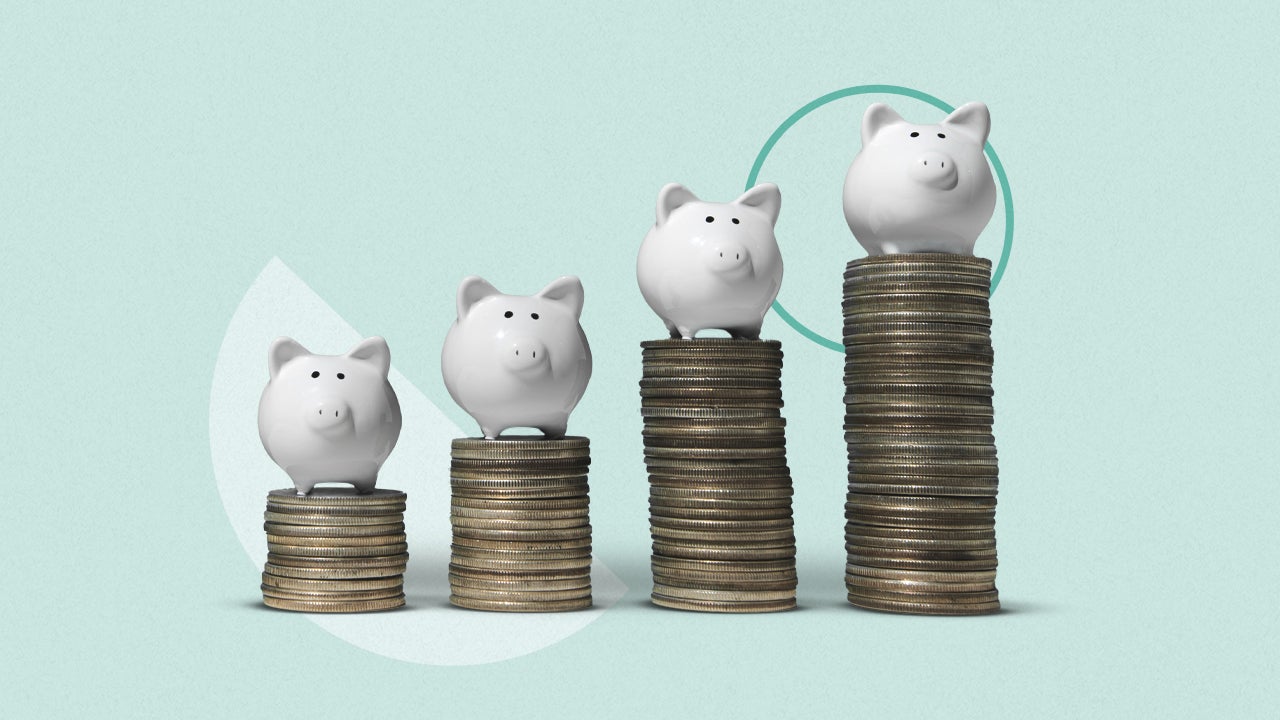CD rates forecast for 2024: Expect banner year for savers with strong yields, lower inflation rate

The Bankrate promise
At Bankrate we strive to help you make smarter financial decisions. While we adhere to strict , this post may contain references to products from our partners. Here's an explanation for .
The year 2023 came to a close with yields that had peaked on certificates of deposit (CDs) and other deposit accounts. Although Federal Reserve rate cuts are possible in 2024, it should remain a strong year for savers as annual percentage yields (APYs) stay high overall and inflation hopefully cools further.
“Gearing up for eventual Fed rate cuts, we’ll see a modest trend toward lower yields beginning early in 2024,” says Greg McBride, CFA, Bankrate chief financial analyst. “However, it will still be a banner year for savers when those returns are measured against a lower inflation rate.”
Key takeaways
- The national average rate for one-year CD rates will be at 1.15 percent APY by the end of 2024, McBride forecasts, while predicting top-yielding one-year CDs to pay a significantly higher rate of 4.25 percent APY at that time.
- The national average yield for five-year CDs at the end of the year will be 1 percent APY, McBride predicts, with top-yielding five-year CDs paying 4 percent APY.
- The national average rate for one-year CD rates started out at 1.07 percent in 2023, and it rose to 1.73 percent by the end of the year. At the start of 2023, the national average rate paid by five-year CDs was 1.16 percent, and it climbed to 1.43 percent by year's end.
CD rates continued to climb in 2023
In 2023, savers who put money into competitive CDs locked in high yields, as interest rates continued to rise at the fastest pace in 40 years. The national average APY for one-year CDs ended the year 0.7 percent higher than at the beginning of the year, while the average for five-year CDs ended the year 0.3 percent higher than at the start.
Average CD APYs showed signs of leveling off beginning in September and continuing through the end of the year. Competitive banks often tend to lift their yields when the Federal Reserve raises rates, which the Fed did earlier in 2023 while overall leaving rates untouched in the second half of the year.
CD investors could see another strong year
Rates on high-yielding CDs and savings accounts generally fluctuate along with the Fed raising or lowering interest rates. Central bankers signaled in recent economic projections that they see some cuts to the Fed’s key interest rate in 2024, albeit on a scale that would still keep that rate at the highest level since 2007.
The year 2024 will be a good one for CD investors, McBride says. “There will continue to be a substantial difference between the national average and the highest-yielding, nationally available offers, so shopping around remains of paramount importance. In 2024, shopping around for better yields will mean outearning inflation, but not shopping around and settling for average will mean trailing inflation.”
What will the Federal Reserve do in 2024?
Although inflation has been cooling, more progress is needed on that front to ward off further rate hikes and to spur rate cuts in 2024, says McBride, who predicts two Fed rate cuts in 2024 of 25 basis points each. Currently, the range for the federal funds rate sits at a 22-year high of 5.25 to 5.50 percent.
In the months leading up to 2024, the Federal Reserve has opted to leave rates unchanged, after raising them 11 times in this economic cycle.
“The sooner you lock in [with a CD rate], the better, because yields have peaked, but inflation is going to continue to decline throughout 2024,” McBride says. “For this reason, that fixed return you lock in on a CD is going to look better and better in after-inflation terms throughout the year.”
Where to find the best CD rates
Bankrate can help you find the best rates available.
- Search online banks. These may offer high yields as an attempt to draw customers from traditional brick-and-mortar banks. An added bonus is that online banks commonly require low minimum opening deposits (and they often don’t charge monthly service fees for many accounts).
- Search credit unions. Credit unions are worth checking into as well since these not-for-profit institutions often share profits with their members in the form of higher APYs.
- Consider minimum deposit requirements. Once you’ve identified a few high-paying banks or credit unions, be sure to select one that has a minimum CD opening deposit you’re comfortable with. While some CDs have no minimum deposit requirements, others may require up to $10,000, or more.
- Take note of early withdrawal penalties. As a rule, you shouldn’t commit funds to a CD that you may need in the meantime for emergencies or living expenses. This is because CDs typically charge a penalty for early withdrawals. That said, it’s still a good idea to familiarize yourself with a CD’s early withdrawal penalty before choosing it. In general, the longer the term, the bigger the penalty you’ll pay.
Taking the time to shop around for the best high-yield CD pays off, as you’ll reap the benefits of the current high-rate environment.




